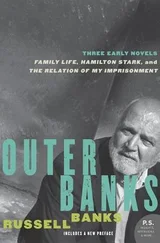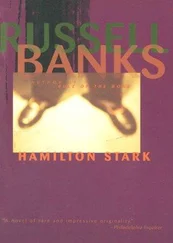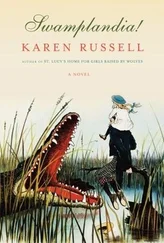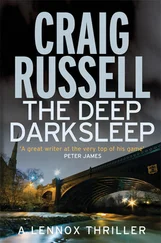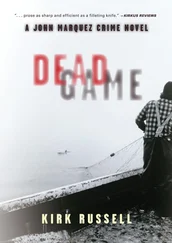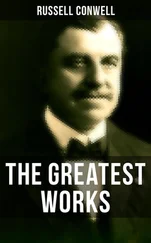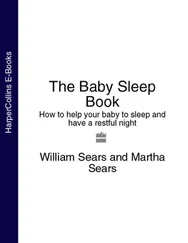Tonight I’m snuffed. Dori’s story, now in its told state, expulsed, floats somewhere far outside of me, emitting its jellyfish light. Sometimes her absence takes me over and then I’m a sleepwalker. Now, for example, as I double back to the Harkonnens.
Here they come again, the white flowers, bystanders rooted in the bright light flowing from the Sleep Van. Bodies move with their own sly life behind the windows, bending and straightening. For no easily discernible reason, I am terrified to reenter the Sleep Van. At some sore point on my revolution around the Harkonnens’ block, I seem to have removed my name badge, my Corps Recruiter jacket. I’d much prefer to remain a stranger out here underneath these fragrant narcotics, the ruffling white blossoms.
I can hear the baby crying. Up ahead I see the Harkonnens' two-toned Chevy again, brown and turquoise, the basketball hoop with its frayed net. Underneath it, the Sleep Van is parked with its rear doors wide open, spilling yellow light across the lawn. Framed in the window, I see Baby A strapped to the catch-crib, her feet tensing and relaxing like little fists.
“No, no, see the bag inflating? She’s still breathing on her own —”
“Get a seal on that, Carmen. Get a tighter seal on that.”
After the Harkonnen draw, we drive to the other side of town, to get a draw from Roberta Frias. Roberta is six and such a funny kid, chatty until the very second before the anesthetic crests and rolls her under. She’s no Baby A. But her sleep is remarkably limpid, a reliable match for many insomniacs. EEGs of her first draw dazzled the nurses. Beautiful NREM —slow-wave, “delta” sleep, the state in which a body repairs tissue, builds bone and muscle, strengthens its immune system.
On the catch-cot, under the clear mask, her smile flutters and disappears. Her mother always dresses Roberta up for a donation, and the nurses have given up on telling her that this is unnecessary; tonight she’s wearing a frilly yellow dress covered in tiny gray mice and a pink hairband. Her parents are watching from the corner of the Sleep Van, nervous and proud. Mr. Frias, a chubby Puerto Rican pastor, taxi driver, and nervous father, a lip-biter, gives me the thumbs-up when our eyes meet.
I don’t know how to describe the unique claustrophobia of a sleep-draw, if you’ve never been present for one, except to compare it to the electric, heavy feeling of air carrying seawater. A frightening, exhilarating charge permeates the entire atmosphere of the Sleep Van; an overpowering sense of ambient destiny, fate crushing in on all sides. This accompanied by a nostril-flaring, neck-prickling vertigo. What provokes this disorientation, says Dr. Peebles, is your body’s awareness of its proximity to an enveloping illusion —a dream, not your own, pumping out of a donor’s prone form. The unhosted ghosts of these dreams in transit, en route to facilities where they will be tested, processed, plated on ice, awaiting transfusion. World-blueprints. Roberta, according to our monitors, is discharging a shocking quantity of dreams. They go soaking out of her mouth and snaking through the breathing tubes, a galaxy per millisecond. The nurses claim not to notice the smell anymore, a clay odor you can almost taste, which reminds me of the white frogs we used to net from midnight ponds, the scooped and dripping lilies.
Minutes four through eight, as the coils begin to heat: the child’s fantasy is in the room with us, unexpressed in any consciousness. Her dreams glug out of her. At the end of the draw, the machinery makes a fantastic chortle, a sort of mechanical blech , and one nurse, Louisa, who is very uncomfortable with child donation, giggles hysterically and says, “Pardon me!”
Two days after my last call out to the Harkonnens, Rudy Storch and I are alone in the trailer, coding for dispatch. At 9:04 p.m., the Slumber Corps’ alert icon flashes onto our computer screens. Seconds later, Rudy is on the phone with Washington. They want every Corps employee present for a live broadcast, an “orientation” to some new crisis, set to air in an hour’s time.
They’re calling it the worst scandal in the Sleep Bank’s seven-year history.
“Oh, fuck me,” says Rudy, glued to the screen. “Get everybody in.”
Here is what we learn in the hours that follow:
On March 23, a man the media is calling “Donor Y” walked into a Sleep Bank in San Diego and asked to register. It was his first time donating sleep. According to his file, he is a forty-two-year-old white male, five-seven, 189 pounds, 128/67 blood pressure, no sexual partners sharing the bed with him, no children. He checked no on all the disqualifying boxes. Sleep apnea: no. Sleepwalking: no. He was next handed the CDC alphabetized list of all three hundred known contagious nightmares —
Abomination, horned
Ambulance, frozen yellow siren
Anthill, no queen
Ants, flesh-eating
Aorta, burst
Asteroid, green
Attic, grandmother’s ghost
Attic, padlocked toy chest
Avalanche, death of self
Avalanche, death of spouse
Avalanche, live burial
Et cetera
Donor Y checked emphatic black noes all the way down the line.
For the past seven years, the CDC has been working in collaboration with every local branch of the Slumber Corps to keep a Dream Database. The CDC monitors the occurrence of communicable nightmares in order to detect trends and to track and investigate outbreaks of similar dreams in certain regions, “nightmare clusters.” Odds ratios, based on logistic regression models, are used to calculate the risk of infection from exposure to a sick dreamer.
Donor Y self-reported clean. “Baby-like, fetal position,” was what he wrote on his questionnaire in response to the question “Describe your sleep posture _____.” His handwriting is neat and evenly spaced; the only unusual thing about it is that Donor Y wrote in tiny all-capitals, like a scream shrunken down into a whisper. Having passed the health prescreen, he donated a twelve-hour unit of sleep —the legal limit for a man his age and weight. Nothing occurred during the draw to put the nurses on alert.
His sleep was transported to the Berkeley testing and processing center; two days later, it was shipped to sleep banks all over the country. The nightmare may have been undetectable by standard testing. It may have been perfectly detectable and somehow missed by the technicians. What is known: Donor Y’s sleep was flagged as “healthy,” centrifugally spun, and packaged into “Sleep Blend G-17,” an amalgam of hundreds of donations designed to neutralize and dilute any residual impurities from single donors. “Sleep blends” are prepared for rapid delivery to the widest spectrum of insomniacs.
Early estimates suggested that anywhere from one thousand to ten thousand patients might have been infected with Donor Y’s nightmare. Within hours of the Corps alert, lawsuits are being threatened —the Slumber Corps is charged with failing to adequately screen volunteer donors and test their sleep.
“Donors are given a questionnaire about their history of sleep disturbance,” says a spokeswoman for the Slumber Corps, Betsy Gamberri. They dressed her in dizzy-tall stilettos and a pink bolero with linebacker shoulder pads, as if seeking to increase her literal stature in the medical community.
“The onus is on donors. You have to self-report your nightmares. The questionnaire, if answered correctly, should have eliminated him.”
“Either the donor did not know he was infected with this nightmare or he lied,” says Dr. Peebles.
Currently, the identity of Donor Y is being kept secret from the public —if it is, in fact, known. This omission stretches to accommodate the wildest theories: rumors of sabotaged files, internal Slumber Corps conspiracies.
Читать дальше

